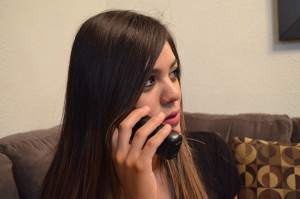Traditionally, medical students learn by sitting alongside tutors and talking to patients about their concerns. When COVID-19 pushed most in-person patient visits to video or telephone communication, the training of students also had to be completed in this way. Dr Anita Gibbons and Dr Mark Lillicrap provide us with some top tips for teaching video and telephone clinics in secondary care.
Before the consultation:
Have purposeful observation:
- Note the different types of history taking skills used when obtaining the patients story, think about other things that could be useful to ask.
- What are the essential points from the consultation that should be put in the letter to the GP?
- Watch the patient during the consultation and state if you think any non-verbal cues were missed.
- After the consultation, discuss the various management options for a patient with the condition.
- Note down any drugs that a student may not be aware of or understand how it could be used with a patient with a particular condition.
Have active participation in the consultation:
- Assign part or all of the consultation to the student/trainee, check they are happy to do this
- Agree a way for them to signal to you they are in trouble and need you to take over
- Agree in advance, if you as the trainer have concerns, you will step in and ask questions or take over the consultation. By agreeing in advance, this will not undermine the student but ensure all consultations are fulfilled appropriately and that you will discuss with the students afterwards. Agreeing in advance will help the student to understand the reasons for you potentially stepping in.
Patient Consent
- The initial letter from the hospital should indicate that a student or trainee may be present in the consultation; patients can decline this option if they so wish.
- When you call them on the day, check again they are happy with the arrangement
- Explain whether the student/trainee is listening in or actively taking part.
During the consultation: (taken from King and Smith, 2020: https:bjgplife.com/2020/05/15/video-consulting-not-just-a-consultation-plus-tech/)
Starting the consultation ensure the 4 C’s:
- Communication check – the patient can hear and see you.
- Confirm the patients identity
- Conform participants, ensure there is nobody off screen
- Consent they are happy to continue with the conversation and in a suitable place to talk.
For Video consultation: (taken from https:bjgplife.com/2020/05/15/video-consulting-not-just-a-consultation-plus-tech/)
- Ensure you look at the camera when talking to the patient as that gives them eye contact.
- Look at the screen when they are talking to you so that you can pick up non-verbal cues.
- Check your understanding of the problem & context.
- Explain clearly in the patients’ language and offer realistic options.
- Think aloud in terms of what you will be doing.
- Recap the assessment, diagnosis and management plan.
- Leave time for questions and maintain the relationship for next time.
After the consultation
- This is precious time to embed the learning with the students
- Give the students a moment to gather their thoughts
- If you have asked them to purposefully observe, don’t forget to debrief their findings
- Get them to write down one or two learning points from each case and advise on how to read up on those later
- If time, document the case on a trainee’s e-portfolio in real time.
There are two models that can be useful when discussing cases with students
- One minute teacher: (Neher JO, Gordon KC, Meyer B, Stevens N. A five-step ‘microskills’ model of clinical teaching. J AM Board Fam Pract.1992;5(4):419-424.)
- Get a commitment (diagnosis, investigation or management plan)
- Prove for supporting evidence (evaluate reasoning/knowledge)
- Teach general rules (take home points)
- Reinforce what was done right (positive feedback)
- Correct errors (recommendations for improvement)
- SNAPPS: A Learner-centred Model for Outpatient Education (Wolpaw, Terry M MD; Wolpaw, Daniel R MD; Papp, Klara K PhD: https://pubmed.ncbi.nlm.nih.gov/14507619/?otool=igbccambulib)
- S – Summarise the case – Succinctly
- N – Narrow the differential – Learner offers no more than 3 differentials
- A – Analyse the differential – Learner reviews pros and cons for each differential, demonstrating analytical reasoning.
- P – Probe the teacher – learner clarifies difficult issues with teacher
- P – Plan the management – Learner develops management plan
- S – Select area for self-directed learning – Reflecting on case may reveal gaps in knowledge that require further study.
The above methods can assist the tutors to ensure the students get a meaningful learning experience despite not being in the same room with the patient and tutor.


